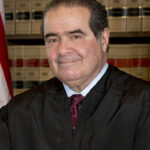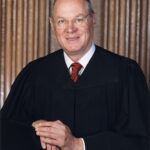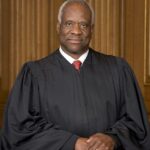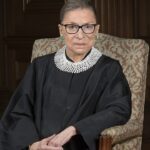JUSTICE O'CONNOR delivered the opinion of the Court.
In January 1999, the Attorney General of Massachusetts promulgated comprehensive regulations governing the advertising and sale of cigarettes, smokeless tobacco, and cigars. 940 Code of Mass. Regs. §§ 21.01-21.07, 22.01-22.09 (2000). Petitioners, a group of cigarette, smokeless tobacco, and cigar manufacturers and retailers, filed suit in Federal District Court claiming that the regulations violate federal law and the United States Constitution. In large measure, the District Court determined that the regulations are valid and enforceable. The United States Court of Appeals for the First Circuit affirmed in part and reversed in part, concluding that the regulations are not pre-empted by federal law and do not violate the First Amendment. The first question presented for our review is whether certain cigarette advertising regulations are pre-empted by the Federal Cigarette Labeling and Advertising Act (FCLAA), 79 Stat. 282, as amended, 15 U. S. C. § 1331 et seq. The second question presented is whether certain regulations governing the advertising and sale of tobacco products violate the First Amendment.
I
In November 1998, Massachusetts, along with over 40 other States, reached a landmark agreement with major manufacturers in the cigarette industry. The signatory States settled their claims against these companies in exchange for monetary payments and permanent injunctive relief. See App. 253-258 (Outline of Terms for Massachusetts in National Tobacco Settlement); Master Settlement Agreement (Nov. 23, 1998), http://www.naag.org. At the press conference covering Massachusetts' decision to sign the agreement, then-Attorney General Scott Harshbarger announced that as one of his last acts in office, he would create consumer protection regulations to restrict advertising and sales practices for tobacco products. He explained that the regulations were necessary in order to "close holes" in the settlement agreement and "to stop Big Tobacco from recruiting new customers among the children of Massachusetts." App.251.
In January 1999, pursuant to his authority to prevent unfair or deceptive practices in trade, Mass. Gen. Laws, ch. 93A, § 2 (1997), the Massachusetts Attorney General (Attorney General) promulgated regulations governing the sale and advertisement of cigarettes, smokeless tobacco, and cigars. The purpose of the cigarette and smokeless tobacco regulations is "to eliminate deception and unfairness in the way cigarettes and smokeless tobacco products are marketed, sold and distributed in Massachusetts in order to address the incidence of cigarette smoking and smokeless tobacco use by children under legal age… [and] in order to prevent access to such products by underage consumers." 940 Code of Mass. Regs. § 21.01 (2000). The similar purpose of the cigar regulations is "to eliminate deception and unfairness in the way cigars and little cigars are packaged, marketed, sold and distributed in Massachusetts [so that]… consumers may be adequately informed about the health risks associated with cigar smoking, its addictive properties, and the false perception that cigars are a safe alternative to cigarettes… [and so that] the incidence of cigar use by children under legal age is addressed… in order to prevent access to such products by underage consumers." Ibid. The regulations have a broader scope than the master settlement agreement, reaching advertising, sales practices, and members of the tobacco industry not covered by the agreement. The regulations place a variety of restrictions on outdoor advertising, point-of-sale advertising, retail sales transactions, transactions by mail, promotions, sampling of products, and labels for cigars.
The cigarette and smokeless tobacco regulations being challenged before this Court provide:
(2) Retail Outlet Sales Practices. Except as otherwise provided in [§ 21.04(4)], it shall be an unfair or deceptive act or practice for any person who sells or distributes cigarettes or smokeless tobacco products through a retail outlet located within Massachusetts to engage in any of the following retail outlet sales practices:
(c) Using self-service displays of cigarettes or smokeless tobacco products;
(d) Failing to place cigarettes and smokeless tobacco products out of the reach of all consumers, and in a location accessible only to outlet personnel." §§ 21.04(2)(c)-(d).
(5) Advertising Restrictions. Except as provided in [§ 21.04(6)], it shall be an unfair or deceptive act or practice for any manufacturer, distributor or retailer to engage in any of the following practices:
(a) Outdoor advertising, including advertising in enclosed stadiums and advertising from within a retail establishment that is directed toward or visible from the outside of the establishment, in any location that is within a 1,000 foot radius of any public playground, playground area in a public park, elementary school or secondary school;
(b) Point-of-sale advertising of cigarettes or smokeless tobacco products any portion of which is placed lower than five feet from the floor of any retail establishment which is located within a one thousand foot radius of any public playground, playground area in a public park, elementary school or secondary school, and which is not an adult-only retail establishment." §§ 21.04(5)(a)-(b).
The cigar regulations that are still at issue provide:
(1) Retail Sales Practices. Except as otherwise provided in [§ 22.06(4)], it shall be an unfair or deceptive act or practice for any person who sells or distributes cigars or little cigars directly to consumers within Massachusetts to engage in any of the following practices:
(a) sampling of cigars or little cigars or promotional give-aways of cigars or little cigars." § 21.06(1)(a).
(2) Retail Outlet Sales Practices. Except as otherwise provided in [§ 22.06(4)], it shall be an unfair or deceptive act or practice for any person who sells or distributes cigars or little cigars through a retail outlet located within Massachusetts to engage in any of the following retail outlet sales practices:
(c) Using self-service displays of cigars or little cigars; "(d) Failing to place cigars and little cigars out of the reach of all consumers, and in a location accessible only to outlet personnel." §§ 22.06(2)(c)-(d).
(5) Advertising Restrictions. Except as provided in [§ 22.06(6)], it shall be an unfair or deceptive act or practice for any manufacturer, distributor or retailer to engage in any of the following practices: "(a) Outdoor advertising of cigars or little cigars, including advertising in enclosed stadiums and advertising from within a retail establishment that is directed toward or visible from the outside of the establishment, in any location within a 1,000 foot radius of any public playground, playground area in a public park, elementary school or secondary school;
(b) Point-of-sale advertising of cigars or little cigars any portion of which is placed lower than five feet from the floor of any retail establishment which is located within a one thousand foot radius of any public playground, playground area in a public park, elementary school or secondary school, and which is not an adultonly retail establishment." §§ 22.06(5)(a)-(b).
The term "advertisement" is defined as:
any oral, written, graphic, or pictorial statement or representation, made by, or on behalf of, any person who manufactures, packages, imports for sale, distributes or sells within Massachusetts [tobacco products], the purpose or effect of which is to promote the use or sale of the product. Advertisement includes, without limitation, any picture, logo, symbol, motto, selling message, graphic display, visual image, recognizable color or pattern of colors, or any other indicia of product identification identical or similar to, or identifiable with, those used for any brand of [tobacco product]. This includes, without limitation, utilitarian items and permanent or semi-permanent fixtures with such indicia of product identification such as lighting fixtures, awnings, display cases, clocks and door mats, but does not include utilitarian items with a volume of 200 cubic inches or less." §§ 21.03, 22.03.
Before the effective date of the regulations, February 1, 2000, members of the tobacco industry sued the Attorney General in the United States District Court for the District of Massachusetts. Four cigarette manufacturers (Lorillard Tobacco Company, Brown & Williamson Tobacco Corporation, R. J. Reynolds Tobacco Company, and Philip Morris Incorporated), a maker of smokeless tobacco products (D. S. Smokeless Tobacco Company), and several cigar manufacturers and retailers claimed that many of the regulations violate the Commerce Clause, the Supremacy Clause, the First and Fourteenth Amendments, and Rev. Stat. § 1979, 42 D. S. C. § 1983. The parties sought summary judgment. 76 F. Supp. 2d 124, 127 (1999); 84 F. Supp. 2d 180, 183 (2000).
In its first ruling, the District Court considered the Supremacy Clause claim that the FCLAA, 15 D. S. C. § 1331 et seq., pre-empts the cigarette advertising regulations. 76 F. Supp. 2d, at 128-134. The FCLAA prescribes the health warnings that must appear on packaging and in advertisements for cigarettes. The FCLAA contains a pre-emption provision that prohibits a State from imposing any "requirement or prohibition based on smoking and health… with respect to the advertising or promotion of… cigarettes." § 1334(b). The FCLAA's pre-emption provision does not cover smokeless tobacco or cigars.
The District Court explained that the central question for purposes of pre-emption is whether the regulations create a predicate legal duty based on smoking and health. The court reasoned that to read the pre-emption provision to proscribe any state advertising regulation enacted due to health concerns about smoking would expand Congress' purpose beyond a reasonable scope and leave States powerless to regulate in the area. The court concluded that restrictions on the location of advertising are not based on smoking and health and thus are not pre-empted by the FCLAA. The District Court also concluded that a provision that permitted retailers to display a black and white "tombstone" sign reading "Tobacco Products Sold Here," 940 Code of Mass. Regs. § 21.04(6) (2000), was pre-empted by the FCLAA. In a separate ruling, the District Court considered the claim that the Attorney General's regulations violate the First Amendment. 84 F. SUpp. 2d, at 183-196. Rejecting petitioners' argument that strict scrutiny should apply, the court applied the four-part test of Central Hudson Gas & Elec. Corp. v. Public Servo Comm'n of N. Y., 447 U. S. 557 (1980), for commercial speech. The court reasoned that the Attorney General had provided an adequate basis for regulating cigars and smokeless tobacco as well as cigarettes because of the similarities among the products. The court held that the outdoor advertising regulations, which prohibit outdoor advertising within 1,000 feet of a school or playground, do not violate the First Amendment because they advance a substantial government interest and are narrowly tailored to suppress no more speech than necessary. The court concluded that the sales practices regulations, which restrict the location and distribution of tobacco products, survive scrutiny because they do not implicate a significant speech interest. The court invalidated the point-of-sale advertising regulations, which require that indoor advertising be placed no lower than five feet from the floor, finding that the Attorney General had not provided sufficient justification for that restriction. The District Court's ruling with respect to the cigar warning requirements and the Commerce Clause is not before this Court.
The United States Court of Appeals for the First Circuit issued a stay pending appeal, App. 8-9, and affirmed in part and reversed in part the District Court's judgment, Consolidated Cigar Corp. v. Reilly, 218 F.3d 30 (2000). With respect to the Supremacy Clause, the Court of Appeals affirmed the District Court's ruling that the Attorney General's cigarette advertising regulations are not preempted by the FCLAA. The First Circuit was persuaded by the reasoning of the Second and Seventh Circuits, which had concluded that the FCLAA's pre-emption provision is ambiguous, and held that the provision pre-empts regula tions of the content, but not the location, of cigarette advertising. See Greater New York Metropolitan Food Council, Inc. v. Giuliani, 195 F.3d 100, 104-110 (CA2 1999); Federation of Advertising Industry Representatives, Inc. v. Chicago, 189 F.3d 633, 636-640 (CA7 1999).
With respect to the First Amendment, the Court of Appeals applied the Central Hudson test. 447 U. S. 557 (1980). The court held that the outdoor advertising regulations do not violate the First Amendment. The court concluded that the restriction on outdoor advertising within 1,000 feet of a school or playground directly advances the State's substantial interest in preventing tobacco use by minors. The court also found that the outdoor advertising regulations restrict no more speech than necessary, reasoning that the distance chosen by the Attorney General is the sort of determination better suited for legislative and executive decisionmakers than courts. The Court of Appeals reversed the District Court's invalidation of the point-of-sale advertising regulations, again concluding that the Attorney General is better suited to determine what restrictions are necessary. The Court of Appeals also held that the sales practices regulations are valid under the First Amendment. The court found that the regulations directly advance the State's interest in preventing minors' access to tobacco products and that the regulations are narrowly tailored because retailers have a variety of other means to present the packaging of their products and to allow customers to examine the products.
As for the argument that smokeless tobacco and cigars are different from cigarettes, the court expressed some misgivings about equating all tobacco products, but ultimately decided that the Attorney General had presented sufficient evidence with respect to all three products to regulate them similarly. The Court of Appeals' decision with respect to the cigar warning requirements and the Commerce Clause is not before this Court. The Court of Appeals stayed its mandate pending disposition of a petition for a writ of certiorari. App. 13. The cigarette manufacturers and U. S. Smokeless Tobacco Company filed a petition, challenging the Court of Appeals' decision with respect to the outdoor and point-of-sale advertising regulations on pre-emption and First Amendment grounds, and the sales practices regulations on First Amendment grounds. The cigar companies filed a separate petition, again raising a First Amendment challenge to the outdoor advertising, point-of-sale advertising, and sales practices regulations. We granted both petitions, 531 U. S. 1068 (2001), to resolve the conflict among the Courts of Appeals with respect to whether the FCLAA pre-empts cigarette advertising regulations like those at issue here, cf. Lindsey v. Tacoma-Pierce County Health Dept., 195 F.3d 1065 (CA9 1999), and to decide the important First Amendment issues presented in these cases.
II
Before reaching the First Amendment issues, we must decide to what extent federal law pre-empts the Attorney General's regulations. The cigarette petitioners contend that the FCLAA, 15 U. S. C. § 1331 et seq., pre-empts the Attorney General's cigarette advertising regulations.
A
Article VI, cl. 2, of the United States Constitution commands that the laws of the United States "shall be the supreme Law of the Land;… any Thing in the Constitution or Laws of any State to the Contrary notwithstanding." See also McCulloch v. Maryland, 4 Wheat. 316, 427 (1819) ("It is of the very essence of supremacy, to remove all obstacles to its action within its own sphere, and so to modify every power vested in subordinate governments"). This relatively clear and simple mandate has generated considerable discussion in cases where we have had to discern whether Congress has pre-empted state action in a particu lar area. State action may be foreclosed by express language in a congressional enactment, see, e. g., Cipollone v. Liggett Group, Inc., 505 U. S. 504, 517 (1992), by implication from the depth and breadth of a congressional scheme that occupies the legislative field, see, e. g., Fidelity Fed. Sav. & Loan Assn. v. De la Cuesta, 458 U. S. 141, 153 (1982), or by implication because of a conflict with a congressional enactment, see, e. g., Geier v. American Honda Motor Co., 529 U. S. 861, 869-874 (2000).
In the FCLAA, Congress has crafted a comprehensive federal scheme governing the advertising and promotion of cigarettes. The FCLAA's pre-emption provision provides:
(a) Additional statements
No statement relating to smoking and health, other than the statement required by section 1333 of this title, shall be required on any cigarette package.
(b) State regulations
No requirement or prohibition based on smoking and health shall be imposed under State law with respect to the advertising or promotion of any cigarettes the packages of which are labeled in conformity with the provisions of this chapter." 15 U. S. C. § 1334.
The FCLAA's pre-emption provision does not cover smokeless tobacco or cigars.
In these cases, our task is to identify the domain expressly pre-empted, see Cipollone, supra, at 517, because "an express definition of the pre-emptive reach of a statute… supports a reasonable inference… that Congress did not intend to pre-empt other matters," Freightliner Corp. v. Myrick, 514 U. S. 280, 288 (1995). Congressional purpose is the "ultimate touchstone" of our inquiry. Cipollone, supra, at 516 (internal quotation marks omitted). Because "federal law is said to bar state action in [a] fiel[d] of traditional state regulation," namely, advertising, see Packer Corp. v. Utah, 285 U. S. 105, 108 (1932), we "wor[k] on the assumption that the historic police powers of the States [a]re not to be superseded by the Federal Act unless that [is] the clear and manifest purpose of Congress." California Div. of Labor Standards Enforcement v. Dillingham Constr., N. A., Inc., 519 U. S. 316, 325 (1997) (internal quotation marks omitted). See also Medtronic, Inc. v. Lohr, 518 U. S. 470, 475 (1996).
Our analysis begins with the language of the statute.
Hughes Aircraft Co. v. Jacobson, 525 U. S. 432, 438 (1999). In the pre-emption provision, Congress unequivocally precludes the requirement of any additional statements on cigarette packages beyond those provided in § 1333. 15 U. S. C. § 1334(a). Congress further precludes States or localities from imposing any requirement or prohibition based on smoking and health with respect to the advertising and promotion of cigarettes. § 1334(b). Without question, the second clause is more expansive than the first; it employs far more sweeping language to describe the state action that is pre-empted. We must give meaning to each element of the pre-emption provision. We are aided in our interpretation by considering the predecessor pre-emption provision and the circumstances in which the current language was adopted. See Medtronic, supra, at 486; McCarthy v. Bronson, 500 U. S. 136, 139 (1991); K mart Corp. v. Cartier, Inc., 486 U. S. 281, 291 (1988).
In 1964, the groundbreaking Report of the Surgeon General's Advisory Committee on Smoking and Health concluded that "[c]igarette smoking is a health hazard of sufficient importance in the United States to warrant appropriate remedial action." Department of Health, Education, and Welfare, U. S. Surgeon General's Advisory Committee, Smoking and Health 33. In 1965, Congress enacted the FCLAA as a proactive measure in the face of impending regulation by federal agencies and the States. Pub. L. 89-92, 79 Stat. 282. See also Cipollone, supra, at 513-515. The purpose of the FCLAA was twofold: to inform the public adequately about the hazards of cigarette smoking, and to protect the national economy from interference due to diverse, nonuniform, and confusing cigarette labeling and advertising regulations with respect to the relationship between smoking and health. Pub. L. 89-92, § 2. The FCLAA prescribed a label for cigarette packages: "Caution: Cigarette Smoking May Be Hazardous to Your Health." § 4. The FCLAA also required the Secretary of Health, Education, and Welfare (HEW) and the Federal Trade Commission (FTC) to report annually to Congress about the health consequences of smoking and the advertising and promotion of cigarettes. § 5.
Section 5 of the FCLAA included a pre-emption provision in which "Congress spoke precisely and narrowly." Cipollone, supra, at 518. Subsection (a) prohibited any requirement of additional statements on cigarette packaging. Subsection (b) provided that "[n]o statement relating to smoking and health shall be required in the advertising of any cigarettes the packages of which are labeled in conformity with the provisions of this Act." Section 10 of the FCLAA set a termination date of July 1, 1969, for these provisions. As we have previously explained, "on their face, [the preemption] provisions merely prohibited state and federal rulemaking bodies from mandating particular cautionary statements on cigarette labels [subsection (a)] or in cigarette advertisements [subsection (b)]." Cipollone, supra, at 518.
The FCLAA was enacted with the expectation that Congress would reexamine it in 1969 in light of the developing information about cigarette smoking and health. H. R. Rep. No. 586, 89th Cong., 1st Sess., 6 (1965); 111 Congo Rec. 16541 (1965). In the intervening years, Congress received reports and recommendations from the HEW Secretary and the FTC. S. Rep. No. 91-566, pp. 2-6 (1969). The HEW Secretary recommended that Congress strengthen the warning, require the warning on all packages and in advertisements, and publish tar and nicotine levels on packages and in advertisements. Id., at 4. The FTC made similar and additional recommendations. The FTC sought a complete ban on radio and television advertising, a requirement that broadcasters devote time for health hazard announcements concerning smoking, and increased funding for public education and research about smoking. Id., at 6. The FTC urged Congress not to continue to prevent federal agencies from regulating cigarette advertising. Id., at 10. In addition, the Federal Communications Commission (FCC) had concluded that advertising which promoted the use of cigarettes created a duty in broadcast stations to provide information about the hazards of cigarette smoking. Id., at 6-7.
In 1969, House and Senate committees held hearings about the health effects of cigarette smoking and advertising by the cigarette industry. The bill that emerged from the House of Representatives strengthened the warning and maintained the pre-emption provision. The Senate amended that bill, adding the ban on radio and television advertising, and changing the pre-emption language to its present form. H. R. Conf. Rep. No. 91-897, pp. 4-5 (1970).
The final result was the Public Health Cigarette Smoking Act of 1969, in which Congress, following the Senate's amendments, made three significant changes to the FCLAA. Pub. L. 91-222, § 2, 84 Stat. 87. First, Congress drafted a new label that read: "Warning: The Surgeon General Has Determined That Cigarette Smoking Is Dangerous to Your Health." FCLAA, § 4. Second, Congress declared it unlawful to advertise cigarettes on any medium of electronic communication subject to the jurisdiction of the FCC. § 6. Finally, Congress enacted the current pre-emption provision, which proscribes any "requirement or prohibition based on smoking and health… imposed under State law with respect to the advertising or promotion" of cigarettes. § 5(b). The new subsection (b) did not pre-empt regulation by federal agencies, freeing the FTC to impose warning requirements in cigarette advertising. See Cipollone, 505 U. S., at 515. The new pre-emption provision, like its predecessor, only applied to cigarettes, and not other tobacco products. In 1984, Congress again amended the FCLAA in the Comprehensive Smoking Education Act. Pub. L. 98-474, 98 Stat. 2200. The purpose of the Act was to "provide a new strategy for making Americans more aware of any adverse health effects of smoking, to assure the timely and widespread dissemination of research findings and to enable individuals to make informed decisions about smoking." § 2. The Act established a series of warnings to appear on a rotating basis on cigarette packages and in cigarette advertising, § 4, and directed the Health and Human Services Secretary to create and implement an educational program about the health effects of cigarette smoking, § 3.
The FTC has continued to report on trade practices in the cigarette industry. In 1999, the first year since the master settlement agreement, the FTC reported that the cigarette industry expended $8.24 billion on advertising and promotions, the largest expenditure ever. FTC, Cigarette Report for 1999, p. 1 (2000). Substantial increases were found in point-of-sale promotions, payments made to retailers to facilitate sales, and retail offers such as buy one, get one free, or product giveaways. Id., at 4-5. Substantial decreases, however, were reported for outdoor advertising and transit advertising. Id., at 2. Congress and federal agencies continue to monitor advertising and promotion practices in the cigarette industry.
The scope and meaning of the current pre-emption provision become clearer once we consider the original preemption language and the amendments to the FCLAA. Without question, "the plain language of the pre-emption provision in the 1969 Act is much broader." Cipollone, 505 U. S., at 520. Rather than preventing only "statements," the amended provision reaches all "requirement[s] or prohibition[s]… imposed under State law." And, although the former statute reached only statements "in the advertising," the current provision governs "with respect to the advertising or promotion" of cigarettes. See ibid. Congress expanded the pre-emption provision with respect to the States, and at the same time, it allowed the FTC to regulate cigarette advertising. Congress also prohibited cigarette advertising in electronic media altogether. Viewed in light of the context in which the current pre-emption provision was adopted, we must determine whether the FCLAA preempts Massachusetts' regulations governing outdoor and point-of-sale advertising of cigarettes.
B
The Court of Appeals acknowledged that the FCLAA pre-empts any "requirement or prohibition based on smoking and health… with respect to the advertising or promotion of… cigarettes," 15 U. S. C. § 1334(b), but concluded that the FCLAA does not nullify Massachusetts' cigarette advertising regulations. The court concentrated its analysis on whether the regulations are "with respect to" advertising and promotion, relying on two of its sister Circuits to conclude that the FCLAA only pre-empts regulations of the content of cigarette advertising. The Court of Appeals also reasoned that the Attorney General's regulations are a form of zoning, a traditional area of state power; therefore the presumption against pre-emption applied.
The cigarette petitioners maintain that the Court of Appeals' "with respect to" analysis is inconsistent with the FCLAA's statutory text and legislative history, and gives the States license to prohibit almost all cigarette advertising. Petitioners also maintain that there is no basis for construing the pre-emption provision to prohibit only content-based advertising regulations.
Although they support the Court of Appeals' result, the Attorney General and United States as amicus curiae do not fully endorse that court's textual analysis of the pre-emption provision. Instead, they assert that the cigarette advertising regulations are not pre-empted because they are not "based on smoking and health." The Attorney General and the United States also contend that the regulations are not pre-empted because they do not prescribe the content of cigarette advertising and they fall squarely within the State's traditional powers to control the location of advertising and to protect the welfare of children.
Turning first to the language in the pre-emption provision relied upon by the Court of Appeals, we reject the notion that the Attorney General's cigarette advertising regulations are not "with respect to" advertising and promotion. We disagree with the Court of Appeals' analogy to the Employee Retirement Income Security Act of 1974 (ERISA). In some cases concerning ERISA's pre-emption of state law, the Court has had to decide whether a particular state law "relates to" an employee benefit plan covered by ERISA even though the state law makes no express reference to such a plan. See, e. g., California Div. of Labor Standards Enforcement v. Dillingham Constr., N. A., Inc., 519 U. S., at 324-325. Here, however, there is no question about an indirect relationship between the regulations and cigarette advertising because the regulations expressly target cigarette advertising. 940 Code of Mass. Regs. § 21.04(5) (2000).
Before this Court, the Attorney General focuses on a different phrase in the pre-emption provision: "based on smoking and health." The Attorney General argues that the cigarette advertising regulations are not "based on smoking and health," because they do not involve health-related content in cigarette advertising but instead target youth exposure to cigarette advertising. To be sure, Members of this Court have debated the precise meaning of "based on smoking and health," see Cipollone, supra, at 529, n. 7 (plurality opinion), but we cannot agree with the Attorney General's narrow construction of the phrase.
As Congress enacted the current pre-emption provision, Congress did not concern itself solely with health warnings for cigarettes. In the 1969 amendments, Congress not only enhanced its scheme to warn the public about the hazards of cigarette smoking, but also sought to protect the public, including youth, from being inundated with images of cigarette smoking in advertising. In pursuit of the latter goal, Congress banned electronic media advertising of cigarettes. And to the extent that Congress contemplated additional targeted regulation of cigarette advertising, it vested that authority in the FTC.
The context in which Congress crafted the current preemption provision leads us to conclude that Congress prohibited state cigarette advertising regulations motivated by concerns about smoking and health. Massachusetts has attempted to address the incidence of underage cigarette smoking by regulating advertising, see 940 Code of Mass. Regs. § 21.01 (2000), much like Congress' ban on cigarette advertising in electronic media. At bottom, the concern about youth exposure to cigarette advertising is intertwined with the concern about cigarette smoking and health. Thus the Attorney General's attempt to distinguish one concern from the other must be rejected.
The Attorney General next claims that the State's outdoor and point-of-sale advertising regulations for cigarettes are not pre-empted because they govern the location, and not the content, of advertising. This is also JUSTICE STEVENS' main p








